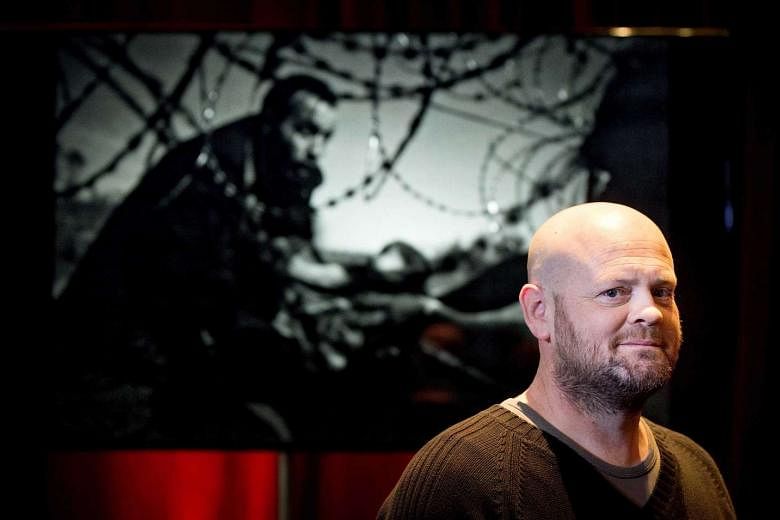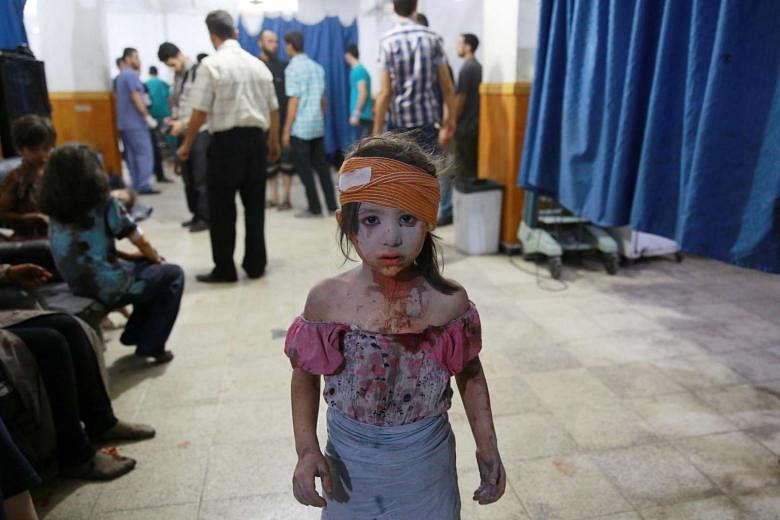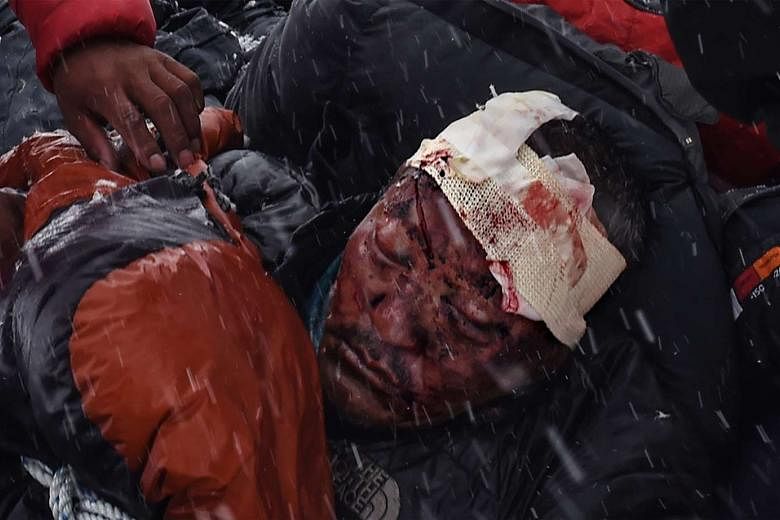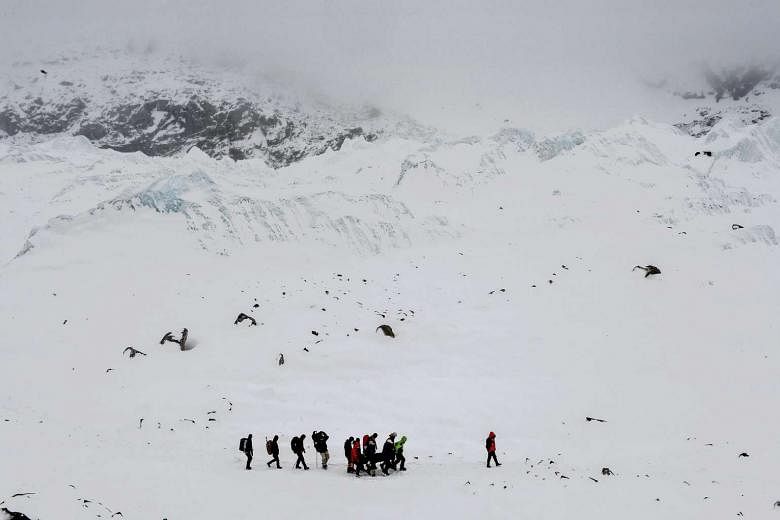AMSTERDAM (AFP) - A haunting black-and-white image of a refugee passing a baby under a barbed wire fence won the prestigious World Press Photo Award on Thursday, highlighting Europe's worst migrant crisis since World War II.
Snapped by Australian freelance photographer Warren Richardson, the picture entitled Hope For A New Life captured the drama of a border crossing between Serbia and Hungary as more than a million people made their way to Europe's shores in 2015 - nearly half of them fleeing Syria's brutal civil war.
"I am humbled by being awarded this prize. I never would have thought I'd be chosen," said Richardson, 47, who originally hails from Melbourne but now lives in Budapest with his partner and three-year-old son.
"This picture continuously make me think: 'What if this was me? What if this was my own son?'," he told AFP in an telephone interview.
"I also see hope. Hope for this man and his child," he said.
Agence France-Presse scooped four awards, including first prize for Syrian-based Sameer Al-Doumy in the Spot News stories category, for his images taken just after air strikes ravaged the city of Douma near Damascus.
"I am very happy to have won this prize through which I hope I'm able to portray the truth of what's happening in my country, Syria, to the outside world," he said in reaction to the award.
His AFP Syrian colleague Abd Doumany won second prize in the General News stories category for his harrowing depiction of children killed and wounded in similar strikes over Douma.
Syria's nearly five-year war has claimed more than 260,000 lives, and al-Doumy added he hoped he would soon not have to take "such painful photos" and that they would help "to encourage the world to really move towards ending this conflict."
Doumany added: "The year 2015 was a very harsh year on us, Syrians, we lost many of those whom we love and those close to us."
"When I heard the news that I won, I felt like my work and efforts had not gone to waste, at least I was able to send the message of suffering of my people to the world," he said.
AFP's veteran lensman Roberto Schmidt won second prize, Spot News stories, for dramatic shots of the deadly avalanche on Mount Everest triggered by last April's Nepal earthquake.
Turkey-based Bulent Kilic won third prize in the same category for his pictures of Syrian refugees on the Turkish border.
This year's competition drew some 82,951 entries from 5,775 photographers from 128 countries.
Judges called Richardson's grainy picture, taken in the dead of night without a flash, "incredibly powerful visually" and a "haunting image."
Richardson had camped with a group of migrants for five days on the border near Roszke in Hungary when he snapped this group as they slipped through the boundary fence.
"We played cat-and-mouse with the police the whole night," Richardson said.
"I was exhausted by the time I took the picture," he added.
"It was around three o'clock in the morning and you can't use a flash while police are trying to find these people, because I would just have given them away," he said, adding he shot his picture using just the light of the moon.
Richardson told AFP he was unsure whether the man handing the baby through the fence from Serbia into Hungary was in fact the child's father, but hoped that the man could eventually be traced.
AFP photo director Francis Kohn, who chaired this year's jury in Amsterdam, said Richardson's picture "had such power because of its simplicity, especially the symbolism of the barbed wire."
"We thought it had almost everything in there to give a strong visual of what's happening with the refugees," Kohn said.
Huang Wen, new media development director at Xinhua News Agency, called it a "haunting image".
Organisers said, meanwhile, they had introduced a "new code of ethics and a transparent and rigorous verification process".
This follows a controversy last year when one of the major prizes was withdrawn after a photographer was accused of staging pictures portraying the gritty Belgian industrial town of Charleroi.
"This resulted in many more entries being checked, but fewer problems than last year being found," said Lars Boering, the World Press Photo Foundation's managing director.














